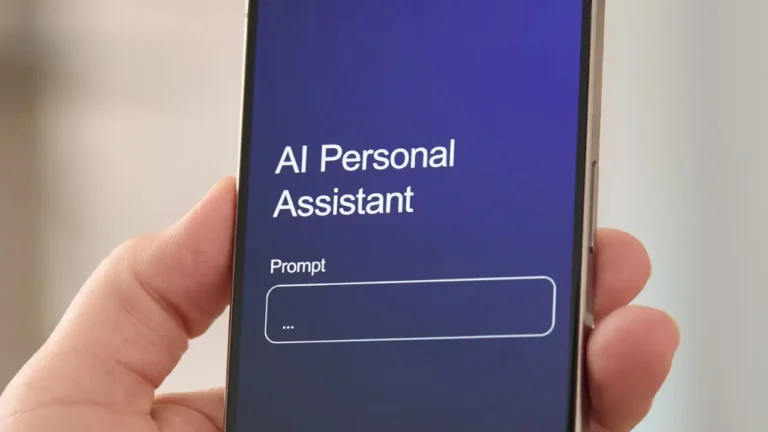TLDR:
- The Inner Loop is an immediate, reactive process for addressing individual customer issues. It is typically managed by frontline teams who work to resolve problems and restore a customer’s trust on a case-by-case basis.
- In contrast, the Outer Loop is a proactive, long-term strategy that identifies and addresses systemic issues. This process involves cross-functional teams who work to implement changes that benefit all customers and prevent future problems.
- The Inner Loop focuses on fixing specific, immediate problems to prevent customer churn. The Outer Loop focuses on creating lasting, strategic changes that will improve the overall customer experience and drive long-term growth for the company.
- While the Inner Loop’s primary goal is to resolve a singular customer issue, its secondary goal is to build trust and prevent churn. The Outer Loop’s goal is to prevent the same problems from occurring again by making improvements at a larger scale.
- Both loops are essential and complementary components of a mature VoC program. The Inner Loop helps build trust with individual customers, while the Outer Loop strengthens the company’s processes and drives sustained growth.
Businesses encounter challenges every day. For example, one day, a customer service team receives an email from a disgruntled customer along the lines of, “Very disappointed in your service.”
A good reaction is to fix it fast. Customer service staff call the customer, smooth things over, maybe offer a credit. The customer leaves the conversation calmer, maybe even impressed that your company acted so quickly. That’s the Inner Loop in action. It’s immediate, personal, and designed to save the relationship before it’s gone for good.
But then, two weeks later, you get the same complaint from a different customer for the same problem. And that’s when it hits that maybe you’ve been patching the leak without fixing the pipe.
That’s where the Outer Loop comes in. Instead of just reacting, you zoom out and look for patterns in the feedback. You start to bring in cross-functional teams and ask the bigger questions: Why is this happening? How do we stop it from happening again?
Why Customer Feedback Matters
More than just data, customer feedback is a direct window into how your business is perceived as well as how you can improve. Organisations that recognise the value of putting customers at the centre of business strategy consider Voice of the Customer (VoC) programs as essential tools for understanding what customers think, feel, and experience. A VoC program, simply put, collects and analyses feedback from different touchpoints to give you a clearer picture of how customers feel about their experience with your company, as well as their needs and expectations. Collecting feedback, however, is only the beginning. What truly matters is how you respond.
Closing the Loop for Real Impact
Closing the loop, which is the practice of turning feedback into action and action into measurable business results, is far more than a feel‑good exercise. When feedback leads to meaningful responses and changes, it can improve retention, reduce churn, and drive real growth. For instance, according to a survey by Forrester, customers are 2.4 times more likely to stick around if a company is able to resolve their issues quickly.
To build a truly responsive VoC program, it’s not enough to react occasionally or only when things go wrong. You need a system that works on two levels. This is where the Inner Loop and Outer Loop come into play. Together, they form the foundation of a mature, closed-loop feedback strategy. The Inner Loop focuses on resolving individual customer issues quickly, while the Outer Loop addresses broader trends and root causes. One repairs relationships. The other improves systems.
Understanding both loops, as well as how they complement each other, can help you turn feedback into loyalty, innovation, and long-term growth.
What Is the Inner Loop? Acting on Individual Feedback
The Inner Loop is where customer feedback meets immediate action. It refers to the process of identifying and resolving individual issues raised by customers as quickly as possible. This is the frontline of your Voice of Customer program, and it’s where employees are empowered to step in, take ownership, and restore trust quickly.
At its core, the Inner Loop is about responding directly to a customer’s concern. This could mean following up on a low NPS score, calling a detractor who had a negative experience, or resolving a service breakdown in real time. The goal is to recover the relationship before it’s lost.
Speed matters here, but so does autonomy. To close the Inner Loop effectively, your frontline teams need access to tools, insights, and the authority to make things right. When employees feel supported in these moments, they’re more likely to act, and customers are more likely to stay.
Use cases for the Inner Loop vary, but they often include:
- Personal callbacks to unhappy customers
- Real-time alerts for negative feedback
- Resolution protocols triggered by specific survey responses
According to Bain & Company, this kind of timely, human response is one of the most powerful drivers of customer loyalty. It’s not just about fixing what went wrong. Rather, it’s about showing customers that their feedback leads to meaningful action.
If you’re just starting to build your VoC capability, focusing on the Inner Loop is a strong first step. It helps you win back customers, boost satisfaction scores, and create a culture where feedback is taken seriously at every level.
What Is the Outer Loop? Driving Systemic Improvements
While the Inner Loop focuses on resolving individual issues, the Outer Loop tackles the bigger picture. It’s about identifying recurring themes in customer feedback and using those insights to drive improvements across your business. This is where long-term change happens
The Outer Loop is where feedback becomes strategy. Rather than reacting to individual complaints, you look for patterns or recurring themes that reveal deeper organisational issues. Those insights help teams redesign processes and refine experiences across the board, leading to more reliable and pleasant journeys for all customers.
Acting on these insights typically requires cross-functional collaboration. It’s not just a CX team’s responsibility; departments like operations, product, marketing, and IT all need to be involved in turning feedback into sustainable change. For example, if many customers complain about difficulties during checkout, the Outer Loop might prompt a redesign of your payment flow, which is something that requires both tech and customer service input.
The business case for doing so is strong. According to a Forrester survey commissioned by Adobe, companies that invest in customer experience across people, process, and technology achieve around 1.4x faster revenue growth and deliver 1.6x higher customer lifetime value compared to organisations that don’t prioritise CX. While the Outer Loop takes longer to execute than the Inner Loop, its impact is often broader and longer-lasting.
Inner Loop vs. Outer Loop: Key Differences and When to Use Each
The Inner and Outer Loops serve different but equally important roles in your VoC program. One focuses on the individual, the other on the system. Understanding when and how to apply each loop can help you respond more effectively to feedback and make sure no insight goes to waste.
Here’s how they compare:
| Aspect | Inner Loop | Outer Loop |
| Focus | Deals with feedback from individual customers and resolves their concerns directly. | Looks at aggregated feedback across multiple sources to identify broader trends and root causes. |
| Stakeholders | Typically handled by frontline teams or those closest to the customer. | Involves cross-functional collaboration, including CX leaders, product managers, operations, and executives. |
| Timeline | Operates on a short timeframe, often within hours or days of receiving feedback. | Unfolds over weeks or months, depending on the nature of the improvement being implemented. |
| Outcomes | Aims to recover customer relationships and prevent churn on a case-by-case basis. | Focuses on redesigning experiences, fixing processes, and reducing the likelihood of repeat issues. |
Rather than viewing these loops in isolation, it’s best to see them as complementary. The Inner Loop builds trust with customers by showing that you’re listening and acting quickly. The Outer Loop strengthens the organisation by making changes that reduce the need for constant recovery in the first place. For example, if customers repeatedly complain about delayed deliveries, the Inner Loop might involve staff reaching out with apologies and updates. The Outer Loop, on the other hand, would investigate the root cause, such as warehouse bottlenecks or courier issues, and work to resolve it permanently.
The strongest VoC programs don’t just react to problems. Rather, they focus on preventing problems. And that’s only possible when both loops are in place and working together.
Conclusion: A Dual-Loop Strategy for Lasting Impact
Customer feedback creates real impact only when it drives change—both immediately and over time. That’s why effective Voice of the Customer programs combine the Inner Loop, which resolves individual concerns, with the Outer Loop, which addresses systemic issues at scale.
By closing the Inner Loop, you build trust and protect at-risk relationships. By acting through the Outer Loop, you improve experiences for all customers, often before problems arise. Together, they create a culture that not only listens to customers but also adapts continuously.Getting started is simpler than it seems. Begin by mapping your feedback touchpoints and ensuring insights reach the right teams. Platforms like Resonate CX’s Voice of the Customer Management Platform make this easier by centralising feedback, automating surveys, tracking sentiment, and supporting closed-loop actions. The payoff isn’t just higher NPS or retention—it’s an organisation that learns faster, acts with purpose, and builds lasting loyalty.









